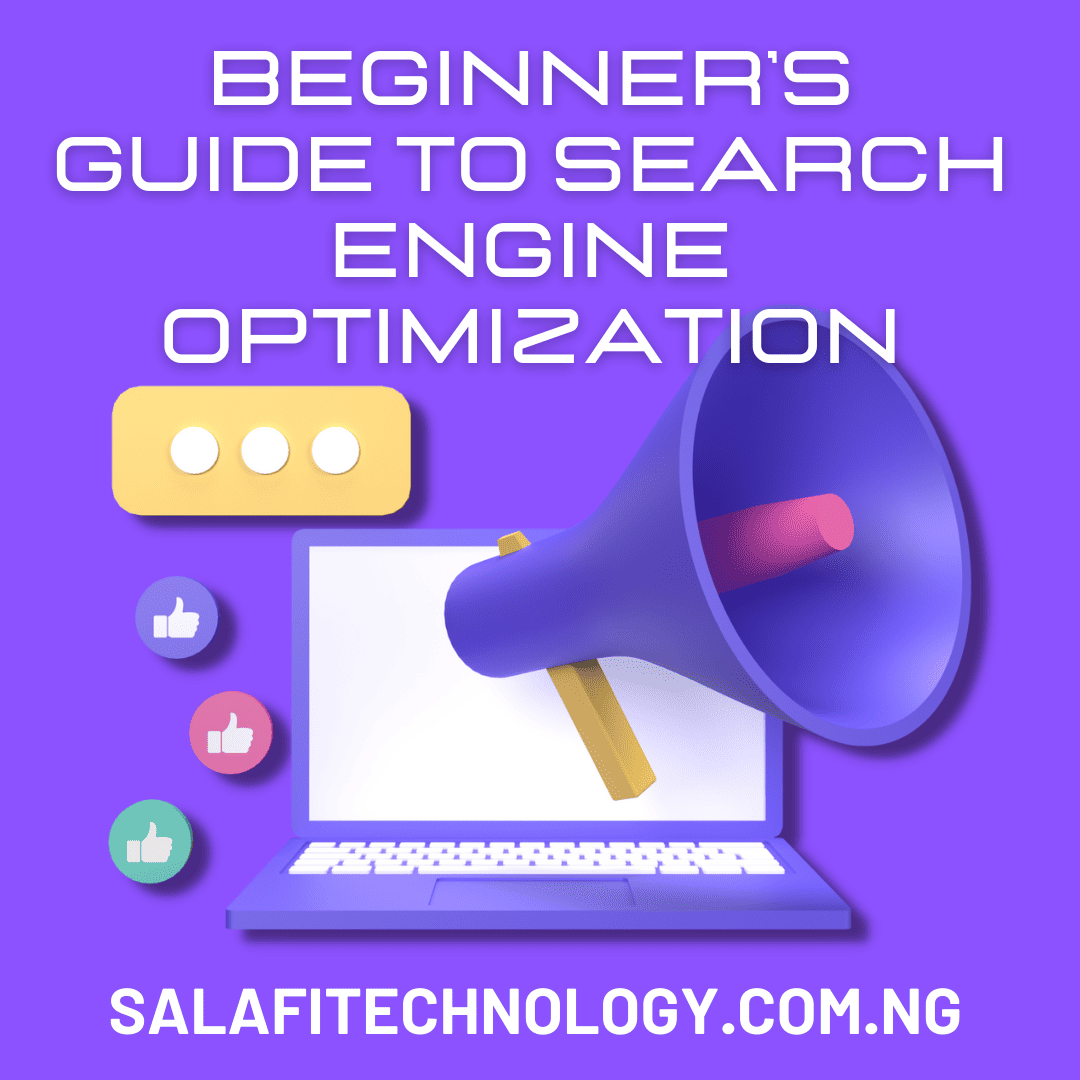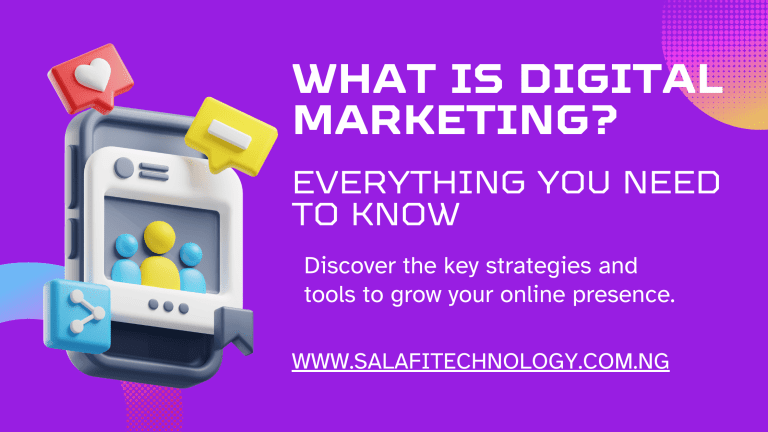Beginner’s Guide To Search Engine Optimization

Having an online presence is crucial for both businesses and individuals. However, merely having a website isn’t sufficient; it needs to be visible to attract visitors. This is where Search Engine Optimization (SEO) becomes vital. In this Beginner’s Guide to Search Engine Optimization, we will explore the importance of SEO and how it can significantly impact your website’s visibility and success.
SEO is one of the processes of optimizing a website to enhance its visibility on search engines like Google, Bing, and Yahoo. By implementing effective SEO strategies, websites can achieve higher rankings in search results, driving more organic traffic and reaching a wider audience.
For beginners, grasping the fundamentals of SEO can feel overwhelming. This guide simplifies the basics of SEO, explaining how it works, its importance, and how you can start optimizing your website for better search engine performance.
What is SEO?
Search Engine Optimization (SEO) is the practice of enhancing a website’s content, structure, and overall performance to improve its visibility on search engine results pages (SERPs). The goal is to make a website more attractive to search engines, which can help it rank higher for relevant keywords and phrases.
When people use search engines, they are often looking for specific information or solutions. The results that appear at the top of the list are typically the most relevant and useful, according to the search engine’s algorithms.
To deliver these results, search engines like Google use a process involving three main steps:
- Crawling: Search engines deploy bots, known as crawlers or spiders, to scan the internet and discover new and updated content.
- Indexing: Once the content is found, it gets analyzed and stored in a vast database called the index. This is where the search engine organizes and understands the content.
- Ranking: When a user enters a query, the search engine pulls from its index and ranks the results based on various factors, such as relevance, quality, and authority, to present the most appropriate answers.
The three key aspects of SEO
- On-Page SEO:
This refers to optimizing individual web pages to rank higher and earn more relevant traffic. Key elements include:- Keyword Optimization: Strategically using relevant keywords in content, titles, and meta tags.
- Content Quality: Creating informative, high-quality content that meets the needs of users.
- Internal Linking: structuring internal links to guide search engines and users through the website.
- Off-Page SEO:
Off-page SEO focuses on activities that happen outside of your website to improve its authority and rankings, such as:- Backlink Building: Acquiring quality backlinks from reputable sites, which signals credibility to search engines.
- Social media marketing: sharing and promoting content to gain more exposure and drive traffic.
- Guest Blogging: Writing articles for other websites in exchange for backlinks.
- Technical SEO:
This aspect ensures that search engines can crawl and index your website efficiently. Important factors include:- Site Speed: Ensuring fast load times for better user experience and ranking.
- Mobile-Friendliness: Optimizing the website to work well on mobile devices.
- Site Architecture: Organizing a website’s structure so that it’s easy for search engines to understand and navigate.
Why is SEO important?
SEO is crucial because it helps websites and businesses improve their visibility on search engines, making it easier for potential customers to find them. When done effectively, SEO brings a range of benefits:
- Increased Organic Traffic – By optimizing a website for relevant keywords, businesses can attract more visitors who are actively searching for products or services they offer. Unlike paid advertising, organic traffic is free and can provide long-term results.
- Cost-Effective Marketing – SEO allows businesses to reach their target audience without paying for each click or impression. Once a website ranks well, it can continue to attract visitors without ongoing costs, making it a sustainable marketing strategy.
- Credibility and Authority – Websites that appear at the top of search results are often perceived as more credible and trustworthy. Consistently ranking high for relevant searches helps establish a brand’s authority in its industry, which can lead to greater customer trust and loyalty.
- Better User Experience – SEO involves optimizing website structure, speed, and content, which also enhances the user experience. Search engines prioritize sites that offer a seamless and user-friendly experience, so improving SEO often goes hand in hand with making a website more accessible and efficient.
- Competitive Advantage:
In today’s digital landscape, businesses that invest in SEO can gain a competitive edge over those that don’t. Ranking higher than competitors in search results allows you to capture potential customers before they even see other businesses. - Targeted Audience:
SEO allows you to reach users who are actively searching for products, services, or information related to your business. This means you’re more likely to attract relevant, high-quality traffic that is interested in what you offer.
Types of SEO: A Focus of This Beginner’s Guide to Search Engine Optimization
SEO can be divided into three main categories: On-Page SEO, Off-Page SEO, and Technical SEO. Each plays a crucial role in improving a website’s search engine ranking.
On-Page SEO: On-page SEO focuses on optimizing elements within your website to improve its visibility on search engines. This includes:
- Title Tags: These are the clickable headlines on search results. They should be concise, relevant, and include the primary keyword.
- Meta Descriptions: short summaries that appear below the title tags in search results. Well-written meta descriptions can increase click-through rates.
- Headers (H1, H2, etc.): Organized headers make content easier to read and help search engines understand the structure of your page.
- Content Optimization: High-quality, informative, and keyword-rich content is key. Using relevant keywords naturally in the content, headings, and subheadings helps improve visibility.
Off-page SEO: Off-page SEO involves activities outside your website that impact its authority and ranking, such as:
- Backlinks: These are links from other websites to your own. High-quality backlinks from reputable sites signal to search engines that your content is trustworthy and authoritative.
- Anchor Text: The clickable text in a hyperlink. Using relevant, descriptive anchor text helps search engines understand the content’s context and boosts SEO.
- Technical SEO Technical SEO focuses on the backend elements of a website that affect its performance and searchability, including:
- Site Speed: Faster loading times enhance user experience and improve rankings.
- Mobile-Friendliness: With most searches happening on mobile devices, having a mobile-friendly site is critical for ranking well.
- XML Sitemaps: Sitemaps help search engines crawl and index your site more efficiently.
Keyword Research: The Foundation of SEO in This Beginner’s Guide to Search Engine Optimization
Keyword research is a fundamental part of SEO that involves identifying the words and phrases people use when searching for information online. Choosing the right keywords helps ensure your content aligns with what your audience is looking for, improving your chances of ranking higher on search engines.
- How to Identify Relevant Keywords To find relevant keywords, start by brainstorming terms related to your business, products, or services. Think about what your target audience might type into a search engine. For example, if you’re focusing on SEO, keywords like “search engine,” “optimization,” and “SEO tools” might be relevant. Consider variations, synonyms, and related phrases to broaden your list.
- Tools for Keyword Research Several tools can help you refine your keyword research and find the best opportunities:
- Google Keyword Planner: It offers insights into search volume, competition, and related keyword suggestions.
- SEMrush: A comprehensive SEO tool that helps identify top-ranking keywords, competitor strategies, and keyword gaps.
- Ahrefs – Another popular tool for discovering keyword ideas, search volumes, and content suggestions.
- Understanding User Intent Knowing why users search for a particular keyword is just as important as finding the keywords themselves. User intent can be informational (seeking answers), navigational (looking for a specific site), or transactional (ready to make a purchase). By understanding the intent behind search queries, you can create content that matches what users are looking for, ultimately improving your chances of ranking and engaging your audience.
Content Creation and Optimization: Essentials from This Beginner’s Guide to Search Engine Optimization
Creating SEO-friendly content is about writing informative, engaging, and well-structured material that meets both user needs and search engine criteria. High-quality content should be easy to read, include relevant keywords naturally, and provide value to the audience.
This not only helps in ranking higher on search engines but also encourages users to spend more time on your site.
- Writing SEO-Friendly Content When writing content, focus on:
- Keyword Placement: Use primary and related keywords naturally in the title, headers, and throughout the text.
- Readability: Break up content with headers, bullet points, and short paragraphs to make it easy to read.
- Relevance: Ensure the content addresses users’ queries and provides clear, actionable information.
- Role of Blogs, Articles, and Social Media: Regularly publishing blogs and articles helps keep your website active and shows search engines that your site is a relevant source of information. These types of content can target various keywords, driving more organic traffic. Sharing content on social media can also boost visibility and generate backlinks, which further enhances SEO performance.
- Importance of High-Quality, Engaging Content: Search engines prioritize content that is original, well-researched, and helpful to users. High-quality content attracts more visitors, encourages them to stay longer, and increases the chances of earning shares, likes, and backlinks. Ultimately, creating engaging content builds trust with your audience, establishing your site as a credible source in your industry.
Social Media and SEO: Insights from This Beginner’s Guide to Search Engine Optimization
While social media itself doesn’t directly impact search engine rankings, it plays a significant role in supporting SEO efforts. By promoting your content on platforms like Facebook, Twitter, Instagram, and LinkedIn, you can increase its visibility, drive more traffic, and enhance engagement.
- The Connection Between Social Media and SEO Social media can indirectly boost SEO by helping content reach a wider audience. When content is shared and interacted with on social platforms, it gains more exposure, which can lead to more backlinks, higher brand awareness, and increased search engine visibility.
- How Social Media Can Drive Traffic to Your Website By sharing blog posts, articles, and other content on social media, you can attract users to click through to your website. Engaging content that resonates with your audience can lead to more shares, likes, and comments, which can extend your reach beyond your existing followers. This increased visibility can result in more visitors to your site.
- Building a Social Media Presence to Support SEO Efforts A strong social media presence helps build brand authority and credibility. Regularly sharing valuable content, interacting with your audience, and maintaining consistent branding across all channels can establish your business as an industry leader. Over time, this can drive more organic traffic to your site, which enhances overall SEO performance.
Understanding Automated Search Engines
Automated search engines are essential tools that help users find information on the internet. These engines rely on bots and crawlers to discover, index, and rank websites.
- Introduction to Automated Search Engines Bots, also known as web crawlers or spiders, are automated programs designed to navigate the web and collect information from various websites. They follow links from one page to another, gathering data about content, structure, and metadata.
- How These Tools Index and Rank Websites Once a bot crawls a website, it analyzes the content and organizes it in a massive database known as the index. Search engines use complex algorithms to determine the relevance and authority of indexed pages based on various factors, including keyword usage, backlinks, and user engagement metrics. When a user performs a search, the search engine retrieves and ranks these indexed pages to deliver the most relevant results.
- Best Practices to Optimize for Automated Search Engines To optimize your site for automated search engines, follow these best practices:
- Use a Clear Site Structure: Ensure your website is easy to navigate, with a logical hierarchy of pages and links.
- Optimize Metadata: Include descriptive title tags and meta descriptions for each page to help crawlers understand the content.
- Create an XML Sitemap: This file guides crawlers to your important pages and ensures all relevant content is indexed.
- Improve Page Speed: Fast-loading pages enhance user experience and are favored by search engines.
- Mobile Optimization: With the increasing use of mobile devices, having a mobile-friendly site is essential for both user experience and SEO.
Tracking and Measuring SEO Success: Key Takeaways from This Beginner’s Guide to Search Engine Optimization
Measuring the success of your SEO efforts is essential to understanding how well your strategies are performing and identifying areas for improvement. By tracking key SEO metrics, you can gain valuable insights into your website’s performance.
- Introduction to SEO Metrics Key SEO metrics to monitor include:
- Organic Traffic: The number of visitors arriving at your site through unpaid search results. An increase in organic traffic indicates successful optimization.
- Bounce Rate: The percentage of visitors who leave your site after viewing only one page. A high bounce rate may suggest that your content isn’t engaging or relevant to users.
- Conversions: The number of users completing desired actions, such as signing up for a newsletter or making a purchase. Tracking conversions helps assess the effectiveness of your site in achieving its goals.
- Overview of Tools to Track SEO Performance: Several tools can help you track and analyze SEO performance:
- Google Analytics: This free tool provides detailed insights into website traffic, user behavior, and conversion rates, allowing you to assess how well your SEO strategies are working.
- Google Search Console: This platform offers data on how your site appears in search results, including impressions, clicks, and average position, helping you monitor indexing issues and optimize visibility.
- Importance of Continuous Monitoring and Improvement: SEO is not a one-time effort; it requires continuous monitoring and optimization. Regularly reviewing your metrics allows you to identify trends, evaluate the effectiveness of your strategies, and make necessary adjustments. By staying proactive and responsive to changes in user behavior and search engine algorithms, you can ensure ongoing improvement and maintain a competitive edge in the digital landscape.
Common SEO Mistakes to Avoid: Lessons from This Beginner’s Guide to Search Engine Optimization
Avoiding common SEO mistakes is crucial for achieving optimal search engine rankings and maintaining a strong online presence. Here are some key pitfalls to steer clear of:
- Keyword Stuffing: Keyword stuffing involves overloading your content with excessive keywords in an attempt to manipulate search rankings. This practice can lead to poor readability and a negative user experience, ultimately resulting in penalties from search engines. Instead, focus on using keywords naturally and contextually to create valuable, engaging content.
- Ignoring Mobile Optimization: With an increasing number of users accessing websites via mobile devices, neglecting mobile optimization can significantly harm your SEO efforts. A site that isn’t mobile-friendly can lead to high bounce rates and low user engagement. Ensure your website is responsive and provides a seamless experience across all devices to enhance usability and search rankings.
- Lack of Content Updates: SEO requires fresh and relevant content to remain competitive. Failing to update your content regularly can cause your website to lose relevance in the eyes of search engines. Regularly revisiting and refreshing existing content, as well as publishing new articles or blog posts helps maintain engagement and improves your chances of ranking well for targeted keywords.
Your Next Steps from This Beginner’s Guide to Search Engine Optimization
In this Beginner’s Guide to Search Engine Optimization (SEO), we explored essential concepts, including the importance of SEO, types of SEO like on-page and off-page optimization, the significance of keyword research, and the role of content creation. We also discussed how social media, automated search engines, and effective tracking can enhance your SEO efforts, along with common mistakes to avoid.
Now that you have a foundational understanding of SEO, it’s time to start implementing these strategies on your website. By focusing on creating high-quality relevant content, optimizing for user intent, and continuously monitoring your performance, you can improve your visibility in search engine results.
To amplify your knowledge, consider exploring additional learning resources, or feel free to contact us for professional SEO services. Your journey to mastering SEO starts now; take the first step toward boosting your online presence!



